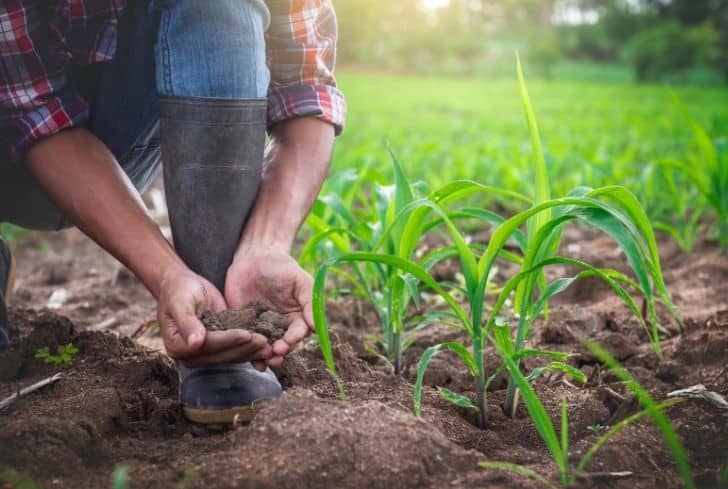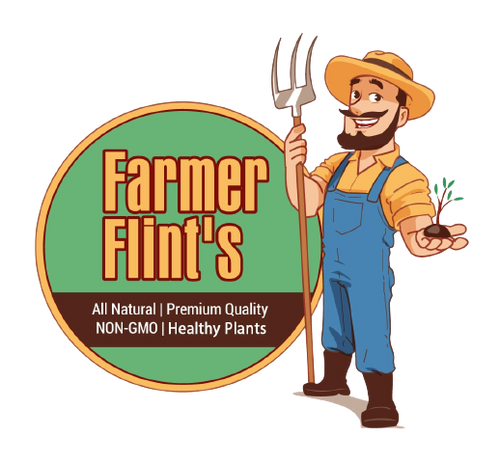Introduction
Sustainable agriculture is an approach to farming that aims to meet society's current food needs without compromising future generations' ability to meet their needs. It prioritizes practices that are economically viable, socially responsible, and that do not degrade the natural environment. There is growing interest in sustainable farming methods as concerns over climate change and environmental degradation increase worldwide. In this article, I will explore various sustainable practices that can help crop farmers transition to more eco-friendly cultivation techniques.
Soil Health and Nutrient Management
The health and fertility of soil is fundamental to sustainable crop production. Instead of relying solely on synthetic chemical fertilizers, organic matter like manure and compost are excellent options to naturally enrich soil. The microbes and nutrients in organic matter improve soil structure and water retention. It also acts as a carbon sink, helping to mitigate greenhouse gas emissions.
Cover cropping is another great soil-building practice. Farmers plant grasses, legumes or other ground covers between regular crop seasons. The roots of cover crops keep soil in place, preventing erosion. They also add minerals and organic matter back into the soil when tilled under. Leguminous cover crops like clover, peas and beans have nitrogen-fixing abilities through root bacteria. This replenishes nitrogen naturally without synthetic fertilizers.
Cutting back on tillage also protects soil structure and benefits microbial activity. Minimum or no-till techniques leave crop residues on fields rather than turning them over. This shields the soil from the sun and rain, maintaining moisture levels. It also nurtures soil organisms important for nutrient cycling and plant health. Farmers can implement reduced tillage by using specialized no-till planters and drills.
Integrated Pest Management
Instead of routinely applying pesticides, integrated pest management (IPM) provides a holistic strategy focused on prevention and natural control methods. The key principles of IPM include monitoring crop fields regularly for insect or disease problems, setting economic thresholds for when treatment is required, and employing cultural, physical and biological controls first before turning to chemicals.
Cultural controls involve practices like crop rotation, companion planting and sanitation that discourage pests. Physical controls utilize things like traps, barriers or mechanical weeding. Biological controls rely on beneficial predatory insects, bacteria or fungi to keep potential pest populations in check naturally. As a last resort, targeted use of low-toxicity pesticides may be applied only when monitoring confirms an infestation exceeds the established economic threshold.
IPM helps minimize environmental and health impacts from misapplied or overused pesticides. It also prevents pests from developing resistance. Many IPM techniques require close observation of the land rather than dependency on scheduled sprays. This hands-on approach fosters a deeper understanding of agroecosystem dynamics. Overall, IPM is versatile and compatible with most farming operations of any size.
Water Management and Irrigation
Water is a finite yet vital natural resource for crop production. Sustainable irrigation techniques help conserve water supplies and prevent pollution. Where possible, farming without irrigation and instead relying on natural precipitation is recommended. Mulching also reduces evaporation from soil and enhances water retention.
For irrigated agriculture, drip irrigation systems are a top choice. Drip lines deliver water directly to soil with minimal loss to evaporation. Precision variable-rate irrigation technologies allow farmers to monitor soil moisture levels and only apply the necessary amounts. Flood or spray systems prone to overwatering runoff are being replaced with more efficient drip options.
Rainwater harvesting through catchment ponds, furrow dykes and underground tanks is another drought-proofing strategy suitable for many regions and scales of farming. Collected rainwater has additional benefits as a non-saline soft water source ideal for irrigation and livestock. Maintaining natural vegetation along waterways also helps absorb rainfall and minimize flooding or soil erosion.
Biodiversity and Wildlife Habitat
Monocropping of high-yield varieties or genetically modified crops is unsustainable long-term. Biodiversity is key to resilient agroecosystems that can better withstand pests, climate stresses or market fluctuations. Hedgerows, forest patches, wetlands and patches of uncultivated land provide habitat for pollinators, biological control agents and other beneficial organisms. They also support genetic diversity that can improve productivity and stress tolerance of crops over time.
Creating buffers and corridors between cultivated fields enhances biodiversity on farms. These semi-natural areas offer shelter and forage for ground-nesting birds, small mammals and insectivores that help control crop-damaging insects. They are also migration routes for pollinators between habitat patches and food sources. With biodiversity loss threatening global food security, every farm has an important role in habitat conservation. Even small refuges help bolster beneficial wildlife populations.
Renewable Energy and Energy Efficiency
Powering farm operations with renewable sources like solar, wind or biogas helps reduce reliance on fossil fuels. Solar photovoltaic panels can generate electricity for irrigation pumps, grain dryers or farm buildings. Anaerobic digesters break down livestock manure to produce methane gas used for heating, electricity or as vehicle fuel. Excess power can even be sold back to the grid.
On-farm renewable infrastructure provides farms more energy independence and stability against fluctuating fuel costs. Farmers are also exploring other renewables like using cover crop biomass for combustion or producing biochar as a soil amendment. Energy efficiency is equally critical - updating older equipment, optimizing tillage patterns and adopting precision practices saves on diesel fuel and maintenance. Proper building insulation, LED lighting and solar thermal hot water also lower ongoing energy costs.
Waste Management and Value-Added Production
Sustainable agriculture approaches waste as a resource rather than a liability. Composting livestock manure and other organic residues recycles nutrients back to replenish soil fertility. Compost also sequesters carbon emissions when tilled into fields. Excess harvest or cull produce not suitable for market can be juiced, dried, canned or preserved for value-added products. Food hubs help aggregate these items to broader consumer bases.
Biogas systems convert manure and food waste into renewable energy as mentioned above. Digestate byproducts make excellent natural fertilizers too. Beyond outputs sold as commodities, resourcefulness in using farm byproducts cuts business expenses and lessens environmental footprints. Creative solutions turn what was once considered waste into new profit streams.

Community Connectedness and Education
A sustainable farm operates synergistically within the community as well as the landscape. On-farm education programs cultivate the next generation of conservationists and source of farm labor. Farmers markets, u-pick operations, subscription agriculture and agritourism help consumers relate to growers while boosting farming income.
Collaboration between farms and local processors, distributors and restaurants strengthens regional food economies. Farmers support each other through cooperative machinery-sharing, labor exchanges during planting-harvest seasons, and organizing buy-local promotions together. Strong community networks build understanding of agriculture's role while increasing its social capital and resilience in times of vulnerability. Both the environment and society benefit from farms that are locally rooted and education-oriented.
Transitioning an Established Farm Operation
Transitioning an existing conventional farm to sustainable practices requires careful long-term planning and a commitment to continuous improvement each season. The initial costs of infrastructure upgrades, reduced yields from rebuilding soil and adoption of new techniques represent an investment. Various financial incentives and technical assistance programs exist however to support farmers through the change process.
It is best to start by focusing on a few core sustainability areas like soil health, irrigation upgrades or weed and pest management plans. Slowly expand the integrated systems over multiple years while closely monitoring impacts. Recordkeeping demonstrates transitions’ effects over time and room for refinement. Some crops may need to be phased out or replaced. Overall, the cumulative benefits of sustainability make farms better equipped to thrive in changing times and leave a positive legacy. With patience and community spirit, the challenge of transitioning can feel rewarding on many levels.
Policy Support for Sustainable Practices
Government policies play a big role in either enabling or discouraging more sustainable agriculture. Subsidies for unsustainable inputs or monocultures skew the free market away from crop rotations and nutrient recycling practices. Supportive policies could redirect funds towards practices proven to maximize environmental, social and economic sustainability. Things like:
- Conservation compliance on subsidies requiring soil/water protection plans
- Cost-share programs for infrastructure assisting renewable energy, irrigation upgrades and soil regeneration techniques
- Targeted research into integrated systems suitable for all climate/soil regions
- Crop insurance premium adjustments incentivizing diverse rotations over monocultures
- Land preservation incentives and right-to-farm laws shielding small/midsized farms
- Value-added processing grants for on-farm production of non-commodity goods
- Public procurement giving preference to local/ sustainably grown foods in institutions
With the right enabling frameworks, sustainable agriculture shows real potential to revitalize rural communities, sequester carbon, enhance resilience and improve public health. Policy plays a big role guiding how agricultural lands are managed for both current and future benefits.
FAQs
FAQ 1: What are some benefits of adopting soil health and nutrient management practices?
Improving soil health brings many benefits. Using organic matter like compost and cover crops enriches the soil with nutrients and improves its structure so it retains water and supports beneficial microbes. This makes the soil more productive and resilient over the long run. It can also reduce dependence on synthetic fertilizers, saving farming costs. Cover crops prevent erosion and naturally replenish nitrogen in the soil. Reduced tillage shields the soil from sun and rain, maintaining moisture levels. Overall, focusing on soil health through organic amendments and minimum disturbance techniques sustains the soil's fertility.
FAQ 2: How does integrated pest management differ from conventional pest control methods?
Integrated pest management (IPM) is a more holistic approach that aims to prevent pest problems using cultural, physical and biological controls before resorting to pesticides. It involves scouting fields regularly to monitor for pests and determine economic thresholds for treatment. If thresholds are exceeded, the lowest risk options are tried first like removing diseased plants or introducing beneficial insects. IPM seeks to minimize health and environmental risks from overusing pesticides and prevent pests from becoming resistant. It requires observing the land more closely rather than relying on scheduled pesticide applications.
FAQ 3: What are some sustainable irrigation techniques farmers can use?
Some sustainable irrigation techniques include using drip irrigation lines, which apply water directly to the soil surface to minimize losses from evaporation. Precision variable-rate irrigation monitors soil moisture to only apply the necessary amounts of water. Rainwater harvesting through catchments, furrows and tanks provides a non-saline water source and helps drought-proof farms. Maintaining vegetated buffers along waterways allows rainfall to absorb naturally before reaching streams.
FAQ 4: How does creating biodiversity on farms benefit the environment and agriculture?
Farm biodiversity protects ecosystems services like nutrient cycling, water filtration and pollination that agriculture relies on. Hedgerows, forest patches and wetland buffers provide habitat that supports predatory insects, birds and small mammals. These natural predators keep pest populations in check, reducing a farmer's need for pesticides. Biodiversity also enhances crop resilience - a wider variety of plant and animal genes means some crops or wild species can better withstand new pests, diseases or climate stresses over time.
FAQ 5: What are some common renewable energy and energy efficiency practices utilized on sustainable farms?
Renewable options include solar photovoltaic panels to power irrigation pumps, grain dryers and farm buildings. Anaerobic digesters produce renewable natural gas from livestock manure. Cover crops and crop residues can be used for combustion or producing biochar as a soil amendment. Farms may also explore small wind or hydro energy. Energy efficiency focuses on upgrading older equipment, optimizing machinery use, incorporating precision agriculture technologies, proper building insulation and switching to LED lighting.
FAQ 6: How can crop farmers take advantage of local markets and value-added production?
Tapping into local consumer bases through farmers markets, community-supported agriculture (CSA) programs, u-pick operations and agritourism enhances farms' financial viability. It also educates people about where their food comes from. On-farm processing allows full-use of harvests - juicing/canning culls makes them saleable. Food hubs help get value-added products to broader markets.
Conclusion
Transitioning to sustainable farming requires an integrated systems approach and long-term mentality. But prioritizing soil health, biodiversity, renewable energy practices, local markets and reducing environmental impacts through techniques like IPM all contribute to resilient farm businesses and ecosystems. Government policies should incentivize practices proven to maximize sustainability over the long run for farmers and future generations. With the right enabling support structures, a transition to regenerative agriculture shows real promise for rural communities and the planet as a whole.


